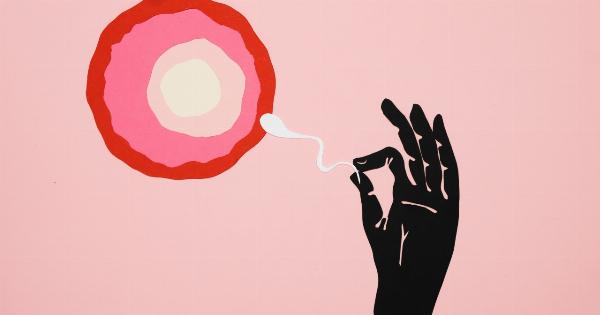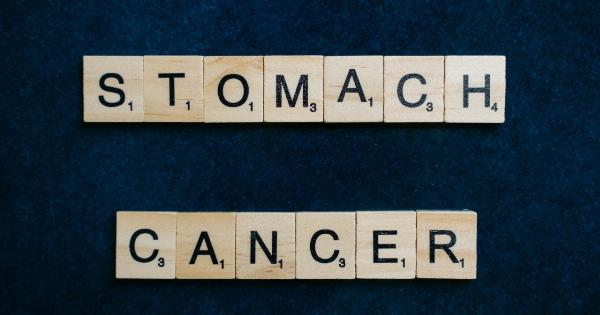Trying to conceive can be an exciting and challenging journey for many couples. Unfortunately, some individuals may face the obstacle of dealing with low numbers of eggs and sperm, which can make the process even more difficult.
In this article, we will explore the causes of low numbers of eggs and sperm, as well as various options and strategies for couples to increase their chances of conception.
Causes of Low Numbers of Eggs
Low numbers of eggs, also known as diminished ovarian reserve (DOR), can occur due to various reasons:.
Age-related Factors
A woman’s age is a crucial factor in egg quantity and quality. As women age, the number and quality of eggs decrease, making it harder to conceive.
This decline in fertility typically starts in a woman’s late 20s or early 30s and accelerates after the age of 35.
Medical Conditions
Certain medical conditions such as polycystic ovary syndrome (PCOS) and endometriosis can also lead to low numbers of eggs. PCOS, a hormonal disorder, can cause irregular ovulation and fewer eggs being released.
Endometriosis, the growth of uterine tissue outside the uterus, can affect egg production and quality.
Genetic Factors
In some cases, genetic factors can play a role in low numbers of eggs. Some individuals may have a lower ovarian reserve due to inherited genetic abnormalities.
Treatments for Low Numbers of Eggs
Ovarian Stimulation
Ovarian stimulation is a common fertility treatment used to increase the number of eggs produced in a woman’s ovaries.
This involves taking medications, such as clomiphene citrate or gonadotropins, to stimulate the ovaries to release multiple eggs during the menstrual cycle. Ovarian stimulation is often followed by in vitro fertilization (IVF) to maximize the chances of conception.
Egg Donation
For individuals with very low numbers of eggs or poor egg quality, egg donation can be a viable option. This involves using donor eggs from a healthy and fertile woman.
The donated eggs are fertilized with the partner’s sperm and transferred to the recipient’s uterus. Egg donation has a high success rate, especially for older women or those with DOR.
Causes of Low Numbers of Sperm
Low numbers of sperm, also known as oligospermia, can be caused by various factors:.
Medical Conditions
Medical conditions such as varicocele, hormonal imbalances, and infections can significantly impact sperm production. Varicocele is a condition where the veins in the scrotum are enlarged, leading to poor sperm production.
Hormonal imbalances, including low testosterone levels, can affect the body’s ability to produce healthy sperm.
Lifestyle Factors
Unhealthy lifestyle habits such as smoking, excessive alcohol consumption, drug use, and obesity can contribute to low sperm count. Exposure to environmental toxins, radiation, and certain medications can also affect sperm production.
Genetic Factors
Genetic factors, including chromosomal abnormalities and inherited gene mutations, can play a role in low numbers of sperm. These genetic abnormalities can affect sperm production, motility, and overall quality.
Treatments for Low Numbers of Sperm
Fertility Medications
Fertility medications, such as clomiphene citrate or gonadotropins, can be prescribed to men with low sperm count. These medications help stimulate the production of sperm and improve overall sperm quality.
Assisted Reproductive Techniques
Assisted reproductive techniques, such as intrauterine insemination (IUI) and in vitro fertilization (IVF), can be utilized to overcome low numbers of sperm. IUI involves placing washed and concentrated sperm directly into the uterus during ovulation.
IVF involves retrieving eggs from the woman’s ovaries, fertilizing them with sperm in a laboratory, and transferring the resulting embryos to the uterus.
Lifestyle Modifications
Adopting a healthy lifestyle can also help improve sperm count and quality. This includes quitting smoking, reducing alcohol consumption, maintaining a healthy weight, and exercising regularly.
Avoiding exposure to environmental toxins and radiation can also be beneficial.
Conclusion
Dealing with low numbers of eggs and sperm while trying to conceive can be a challenging and emotionally draining experience for couples.
Understanding the underlying causes and available treatment options can provide hope and guidance for those facing this issue. Whether through fertility medications, assisted reproductive techniques, or lifestyle modifications, there are various paths to explore in the pursuit of parenthood.




























